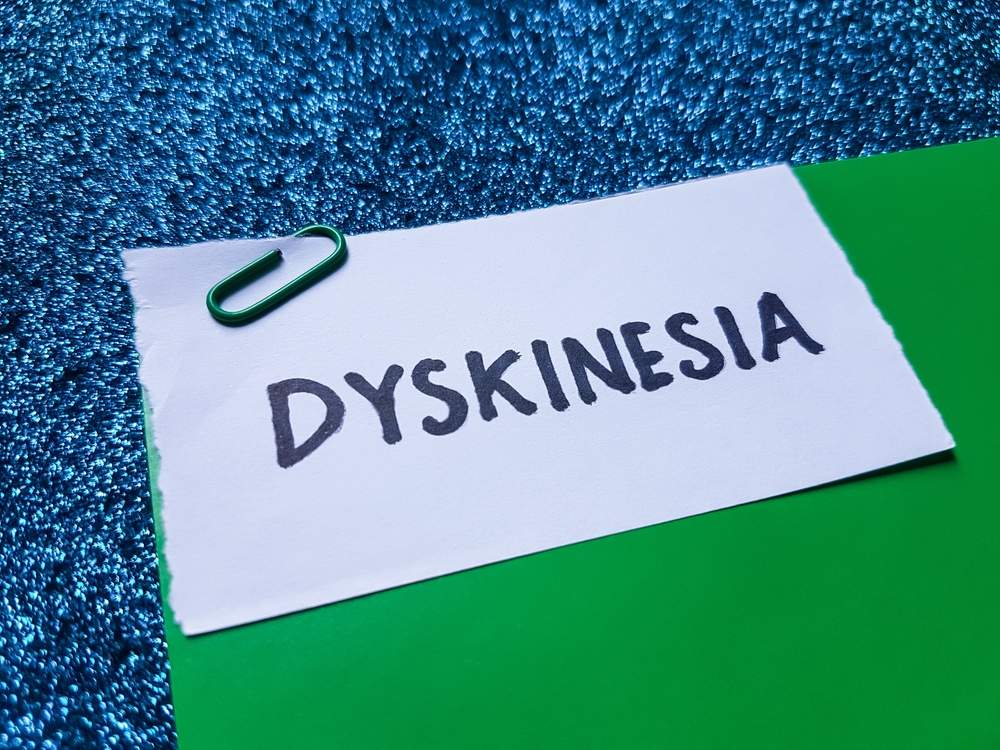Dyskinesia, often associated with Parkinson’s disease, refers to involuntary and erratic movements that can significantly impact individuals living with the condition. These movements, appearing as writhing or jerking, affect various parts of the body and frequently complicate daily life. Understanding dyskinesia is essential for patients, caregivers, and healthcare professionals, as it commonly arises as a side effect of long-term Parkinson’s treatment.
Parkinson’s disease is a progressive neurological disorder marked by motor symptoms like tremors and stiffness. Medications such as levodopa effectively manage these symptoms but may lead to dyskinesia over time. In this guide, we explore the causes, symptoms, and treatment strategies for dyskinesia, providing valuable insights to help individuals manage their condition effectively.
Understanding Dyskinesia
What is Dyskinesia?
Dyskinesia refers to involuntary and unpredictable movements that can manifest as writhing, twisting, or jerking motions. These movements often affect the arms, legs, face, or trunk. Dyskinesia commonly results from long-term use of medications like levodopa, prescribed to manage Parkinson’s symptoms.
The condition develops as the brain adapts to these medications, leading to motor fluctuations. It is crucial to distinguish dyskinesia from other movement disorders, as it primarily arises due to medication effects rather than the disease itself. Identifying dyskinesia symptoms early allows for timely discussions with healthcare providers to implement effective management strategies.
Types of Dyskinesia
Dyskinesia in Parkinson’s disease can be categorized into several types:
- Peak-Dose Dyskinesia – Occurs when medication levels are highest in the bloodstream, leading to twisting or writhing movements.
- Diphasic Dyskinesia – Arises at the beginning and end of a medication dose cycle, often causing rapid, jerky movements.
- Off-Period Dystonia – Occurs when medication levels are low, resulting in sustained muscle contractions and abnormal postures. Note: While dystonia shares similarities with dyskinesia, it is considered a separate movement disorder.
By identifying the specific type of dyskinesia, healthcare providers can adjust medication schedules or consider alternative therapies to alleviate symptoms and improve daily functioning.
Common Dyskinesia Symptoms
Symptoms of dyskinesia vary but often include:
- Involuntary, erratic movements such as fidgeting, writhing, or jerking.
- Muscle contractions affecting the arms, legs, torso, or facial muscles.
- Increased movement symptoms in response to medication peaks.
Unlike Parkinson’s tremors, which are rhythmic and occur primarily at rest, dyskinesia is associated with medication timing. Identifying these symptoms enables patients and caregivers to monitor changes and discuss treatment modifications with healthcare professionals.
Causes of Dyskinesia in Parkinson’s Disease
Dyskinesia results from the interplay between disease progression and long-term medication use. As Parkinson’s advances, the brain’s ability to store and release dopamine diminishes, leading to motor fluctuations. Levodopa treatment compensates for this dopamine loss, but over time, the brain’s response becomes inconsistent, resulting in peaks and troughs in symptom control.
Understanding these factors helps healthcare providers make informed treatment adjustments, such as optimizing medication timing or exploring adjunct therapies, to minimize motor fluctuations and improve quality of life.
Impact on Quality of Life
Dyskinesia can significantly affect a person’s ability to perform daily tasks such as eating, dressing, and walking. This loss of independence may impact self-esteem and emotional well-being. Additionally, individuals may experience:
- Social withdrawal due to self-consciousness about involuntary movements.
- Increased dependency on caregivers for routine activities.
- Psychological effects such as frustration, depression, or anxiety.
A comprehensive management plan, including medical treatments and lifestyle adjustments, is essential to help patients maintain their independence and overall well-being.
Managing Dyskinesia Symptoms
1. Adjusting Medication Plans
Since dyskinesia is often a side effect of long-term levodopa use, fine-tuning the medication regimen can help minimize symptoms. Strategies include:
- Adjusting the timing or dosage of levodopa to stabilize dopamine levels.
- Introducing additional medications such as dopamine agonists or enzyme inhibitors.
- Exploring extended-release formulations for more consistent symptom control.
2. Exploring Alternative Therapies
Complementary therapies can support traditional treatments in managing dyskinesia symptoms:
- Physical Therapy – Focuses on strength, flexibility, and balance to improve mobility.
- Occupational Therapy – Helps patients adapt daily tasks and maintain independence.
- Mindfulness and Stress Management – Techniques such as yoga or tai chi may help reduce symptom severity.
These therapies, combined with medication adjustments, provide a holistic approach to managing dyskinesia effectively.
The Role of Support Networks
Building a strong support network is essential for patients and caregivers. Support groups, both in-person and online, provide:
- Emotional encouragement and shared experiences.
- Practical coping strategies for managing daily challenges.
- A sense of community, reducing feelings of isolation.
Caregivers also benefit from support networks, as they provide guidance, encouragement, and shared resources for managing their loved one’s condition.
Communication with Healthcare Providers
Open communication with medical professionals is critical for effective dyskinesia management. Patients should:
- Maintain a symptom diary, noting movement patterns and medication effects.
- Report any new or worsening symptoms promptly.
- Discuss concerns about quality of life and treatment adjustments with their neurologist.

Early intervention enables healthcare providers to tailor treatment plans and prevent symptoms from escalating.
Educational and Support Resources
Numerous organizations provide valuable information and support for individuals with Parkinson’s disease and dyskinesia, including:
- Parkinson’s Foundation – Offers educational guides and community support.
- Michael J. Fox Foundation – Provides research updates and treatment resources.
- Local Support Groups – Connect patients and caregivers with others facing similar challenges.
Accessing these resources empowers patients with the knowledge and confidence to manage their condition more effectively.
Conclusion
Dyskinesia is a complex but manageable condition for individuals with Parkinson’s disease. By understanding the symptoms, causes, and treatment options, patients and caregivers can take proactive steps to enhance quality of life. Consulting with healthcare providers, exploring alternative therapies, and engaging with support networks are key strategies in managing dyskinesia effectively.
For personalized support and guidance, contact our team today.
